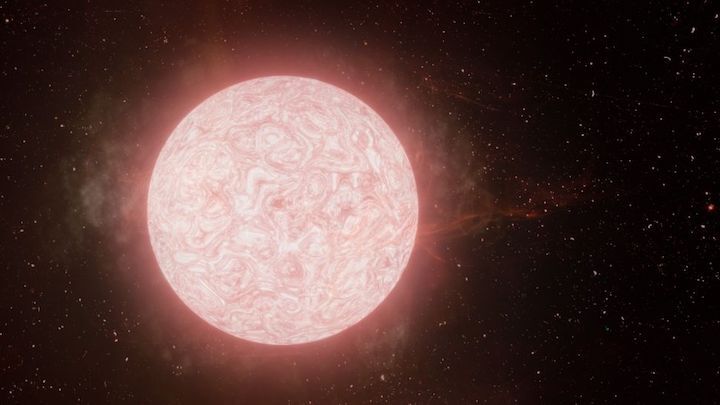8.01.2022
"This is a breakthrough in our understanding of what massive stars do moments before they die."
It's much easier for scientists to see the messy aftermath of stellar explosions than to watch the prelude to the drama.
But finally, astronomers managed to observe a red giant star just as it "went supernova," as exploding stars are called. Using a telescope in Hawaii, a team of scientists gathered observations of a red supergiant star in summer 2020. Lo and behold, in September, that very same star died in a supernova dubbed (SN) 2020tlf — an explosion that team members called "one of the most intriguing" supernovas of its type.
"This is a breakthrough in our understanding of what massive stars do moments before they die," Wynn Jacobson-Galán, an astronomy National Science Foundation Graduate Research Fellow at the University of California Berkeley and lead author of a new study reporting the results, said in a statement from the Keck Observatory, where the team gathered observations. "For the first time, we watched a red supergiant star explode!"

An artist's depiction of a red supergiant star within the last year before it explodes. (Image credit: W. M. Keck Observatory/Adam Makarenko)
The star that exploded was a red supergiant that contained about 10 times the mass of the sun and was located about 120 million light-years from Earth in the NGC 5731 galaxy, according to the statement.
In the new research, the astronomers pulled together observations of the region including the supernova from a host of telescopes, beginning as early as January 2020 and continuing for nearly a full year after the explosion. (NASA's orbiting Neil Gehrels Swift Observatory joined the work after the star went boom.)
Taken together with some archival observations, all that information gave the scientists a sense of what the neighborhood is like, how the star was behaving in its final days and how the supernova itself unfolded.
Particularly of interest to the astronomers were observations of the star gathered within the last four months pre-supernova, which showed extra light in the area. Observations to date hadn't given any hint that red supergiants act any differently before exploding; the SN 2020tlf activity suggests that some of these stars may put up red flags.
"It's like watching a ticking time bomb," study senior author Raffaella Margutti, an astronomer also at UC Berkeley, said in the same statement. "We've never confirmed such violent activity in a dying red supergiant star where we see it produce such a luminous emission, then collapse and combust, until now."
The astronomers hope to spot more red supergiants pre-eruption to better understand the final days that lead up to a supernova event.
"I am most excited by all of the new 'unknowns' that have been unlocked by this discovery," Jacobson-Galán said. "Detecting more events like SN 2020tlf will dramatically impact how we define the final months of stellar evolution, uniting observers and theorists in the quest to solve the mystery on how massive stars spend the final moments of their lives."
The new study was published Thursday (Jan. 6) in The Astrophysical Journal.
Quelle: SC
